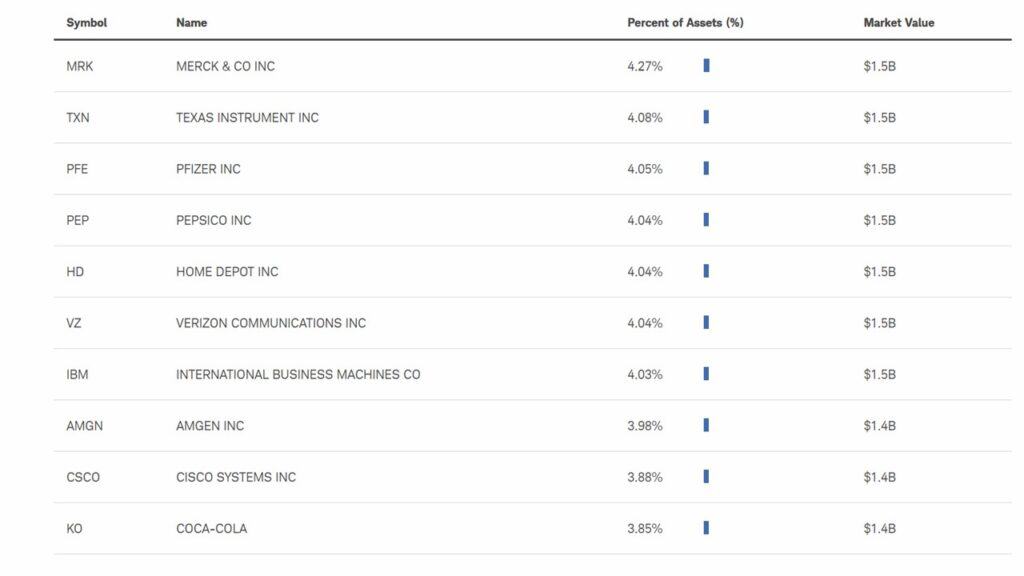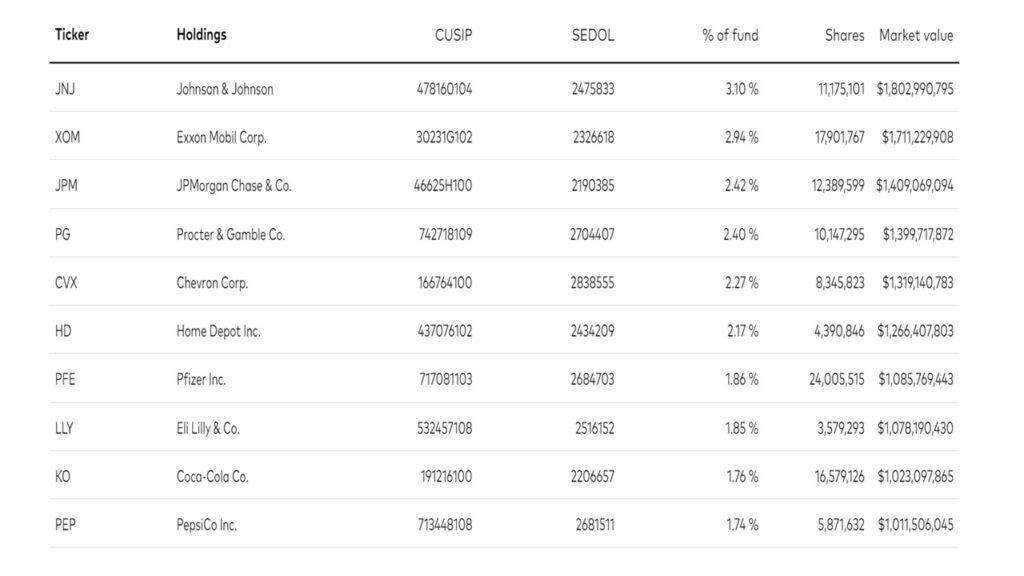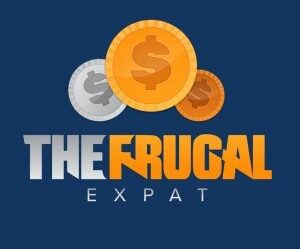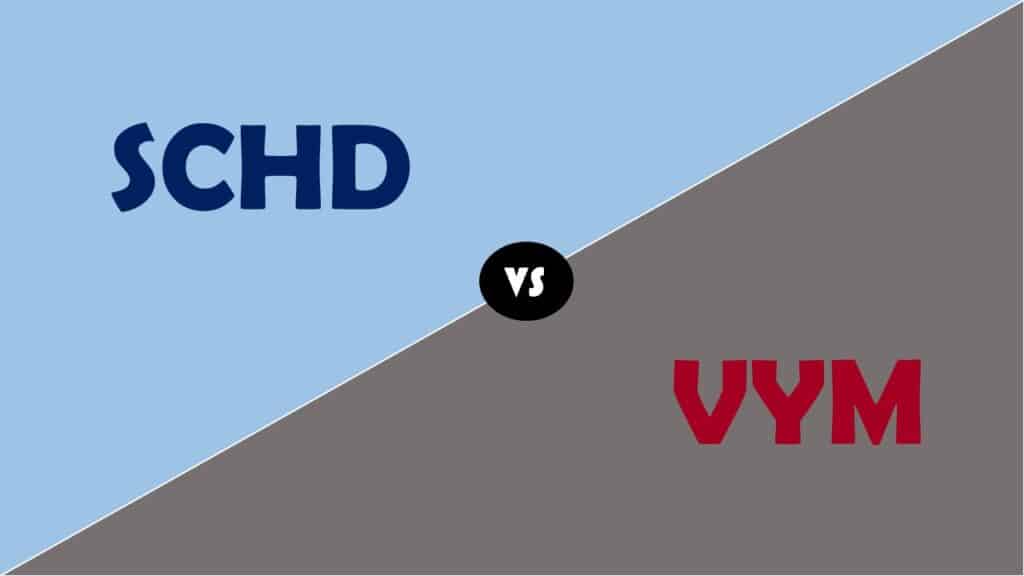Dividend stocks come in all shapes and sizes. People want to add a good dividend stock to their portfolio for extra income. Why is it so hard to pick the right one? Through lots of research, finding the right sets of dividend stocks can be time-consuming. A good dividend ETF like SCHD or VYM can provide a simple, low-cost option for dividends.
SCHD and VYM are two of the best dividend Exchange-Traded Funds on the market. They provide diversification and good yields and come from reputable companies like Schwab and Vanguard. So which one is the better dividend ETF?
Let’s break down SCHD vs VYM.
What is a Dividend?
Before we get into SCHD vs VYM, let’s start with dividends. Dividends are the excess profits a company has accumulated over the last year. They have a choice. They can either reinvest their profits into the company or give the shareholders a piece in the form of a dividend.
Many growth companies will prefer to reinvest in their company. These companies are Tesla, Amazon, and Google. Companies like Apple and Microsoft have smaller dividends, but they, too, reinvest into the growth.
Other companies that have been around for a very long time will not have much growth, so they will be more generous with their profits. These companies are like Coke and Home Depot. They give out dividends and continue to create a great brand for all to love.
What is an ETF?
An Exchange-Traded Fund, or ETF for short, is a type of fund that is like a mutual fund but traded on the open market like a stock. There are wide varieties of these. Some are low-cost index ETFs, and some are managed with higher expense ratios.
SCHD and VYM are tracking indexes, which means they will be managed passively, allowing the investor to have low costs associated with these two ETFs. The great thing is you do not have to do too much research on individual companies. These ETFs follow the index, and it helps with diversification and large swings in the market.
An Overview of SCHD:
SCHD is the Schwab U.S. Dividend Equity ETF tracks the Dow Jones Dividend 100 Index. The goal of the ETF is to follow as close to the index as possible, giving it a low-cost option focused on the quality and sustainability of dividends.
With the Dow Jones Dividend 100 Index, no company will have a more than 4% weight. That allows it to have no company creating a top-heavy index. They update the weights every quarter so, throughout the quarter, certain companies may gain as others falter. That is the nature of a market going up and down.
The great thing about SCHD is that it is an ETF that features valued companies. It may not be as tech-heavy as QQQ or focused on the top 500 large-cap companies like VOO, but it is based on companies that provide sustainable dividends. These dividends can come from the companies that continue to increase and not cut tips.
SCHD has no REITs (Real Estate Investment Trusts), but that should not deter you from this quality dividend ETF.
SCHD Top 10 Holdings:

Overview of VYM:
VYM is the Vanguard High Dividend Yield ETF. It tracks the FTSE High Dividend Yield Index with a focus on those companies that have an above-average dividend yield.
Its focus is on companies that offer high yields. That does not mean the ETF will have higher yields. VYM contains 443 different companies giving it less concentration on top companies than SCHD.
The stocks included will have an above-average dividend yield and be weighted according to the index. The fund has a lower turnover of assets and is relatively cheap, with a P/E of 13.8x.
VYM Top 10 Holdings:

Similarities of SCHD vs VYM:
Here are a few similarities between SCHD vs VYM.
The Expense Ratio:
The expense ratio is the number of costs associated with operating these funds. Both SCHD and VYM have a similar expense ratio of 0.06%. That means that it will cost $6 for every $10,000 invested.
If you compare that to managed ETFs like ARKK of 0.75%, you are saving about 69% more or $69 more on each $10,000. That is money being saved and more compounding interest working for you over the long haul.
Higher Dividend Yields:
Both SCHD and VYM present higher dividend yields for their investors. They both have a yield of over 3%, which means you will receive more income for owning these ETFs. Other ETFs may have a lower yield. If you are going for more income, then an ETF with a higher yield will help bring about more income.
Differences Between SCHD vs VYM:
The differences between the two ETFs can help you make a decision on which one to choose.
Diversification:
VYM has 443 stocks in the ETF. It boasts more companies giving more diversification within the fund and not allowing there to be too much concentration in the fund. If you are looking for an ETF that is not so concentrated, then look for one with more companies involved.
SCHD has 104 different holdings as a part of the fund. Concentration can be a good thing for people looking for value-based ETFs. You do not have to worry about those smaller companies; you can focus on companies that you enjoy and know will continue to provide value and quality to their dividends.
The Dividend Yield:
VYM has a yield of 3.02%, and SCHD has a yield of 3.62%. That means that SCHD will provide more dividends allowing you to have more income and overall performance with dividends reinvested.
These yields are pretty similar. As a dividend investor, you want to look for the quality of dividends. SCHD and VYM have these, but VYM boasts a high dividend yield ETF. As you can see, SCHD has a higher yield.
It is no competition that SCHD wins in the yield race.
Performance:
Most dividend investors are looking for yields. As we look at these ETFs, the performances overall are pretty different.
SCHD, over the last ten years, has gained 13.11% annually, and VYM has gained 11.10% in the same period. Typically, the S&P 500 outperforms the SCHD, but in the last ten years, VOO has gained 13.04%.
In the long run, VOO will have a better performance because of the concentration on technology companies, but as you can see, SCHD comes very close to the version of the S&P 500.
As you look for more value in companies during a recession or downturn take a look at SCHD, it’s valued company approach shines.
ETF Focused Strategy:
SCHD is focused on finding quality, sustainable dividend-yielding companies. That is the goal of the Dow Jones Dividend 100 index. That means it is looking for value in the companies it holds. There will be no company that is weighted more than 4% on the index. Those companies included will be Coke Cola, IBM, and Home Depot.
VYM focuses on common stocks that are predicted to have higher yields. That can be Johnson and Johnson, Exxon Mobil, and JP Morgan Chase. The weight of each company in the portfolio will be determined by its market cap; as long as these companies are predicted to have higher than average dividend yields, they will be included in VYM.
They are both different and have different goals to achieve. It is your choice which to choose.
SCHD vs VYM: Which Dividend ETF Would You Choose?
These are both extraordinary dividend ETFs to choose from. Of course, they have low expenses and focus on dividends, but many differences separate them.
As you can tell, SCHD has a higher overall performance than VYM. As a dividend investor, that may not be a selling point for you, but if you are focusing on the growth of the fund over the long run, you may want to consider those numbers.
SCHD has a higher dividend yield with a higher concentration of valued companies. VYM has a lower yield and over 400 different companies, allowing it to have a lower concentration of top companies. That is one of the selling points of SCHD.
If you are into dividends, you want your dividends to grow over time. The yield becomes an essential factor as well. The sustainability in the company or fund. These criteria fit with SCHD, and with better performance long-term, SCHD then wins overall as the better dividend ETF.
VYM’s strategy is focused on higher-yield companies, but because there is such a lower concentration of said companies, the yield drops compared to SCHD. It has a higher diversification level, but when building a portfolio, you also need to look at the companies that make up the fund.
Final Thoughts:
Each fund, SCHD or VYM, will be great to add to your portfolio. They are similar in that they want to provide dividends but differ on several levels. SCHD outshines VYM in various aspects such as performance and yield and would be a great ETF to add to your portfolio. VYM is also a great ETF to add to your portfolio with greater diversification.
Hopefully, you can make your own decision on which one to pick.
Related Posts:

I’m Steve. I’m an English Teacher, traveler, and an avid outdoorsman. If you’d like to comment, ask a question, or simply say hi, leave me a message here, on Twitter (@thefrugalexpat1). Many of my posts have been written to help those in their journey to financial independence. I am on my journey, and as I learn more I hope to share more. And as always, thanks for reading The Frugal Expat.







